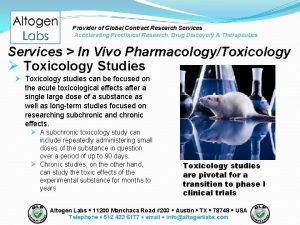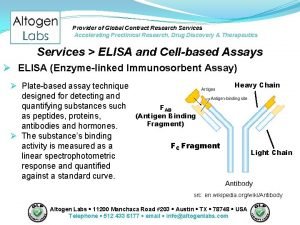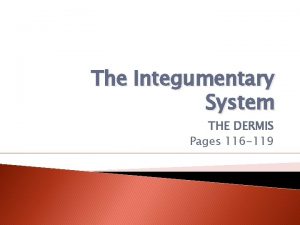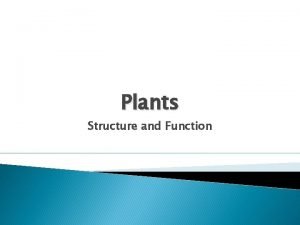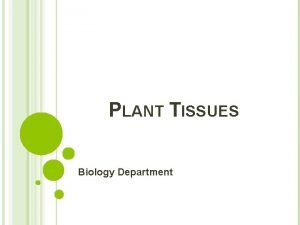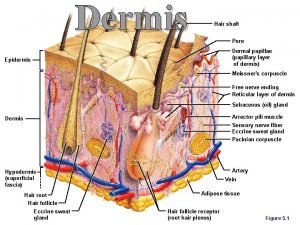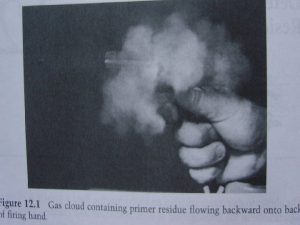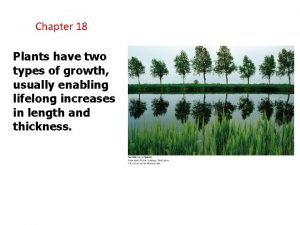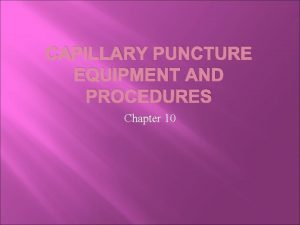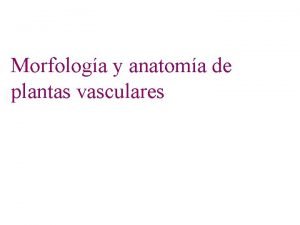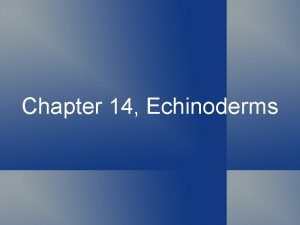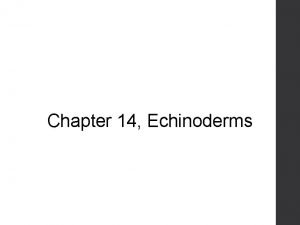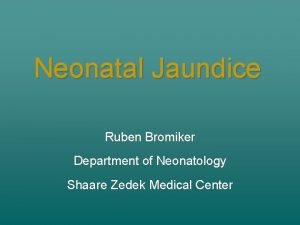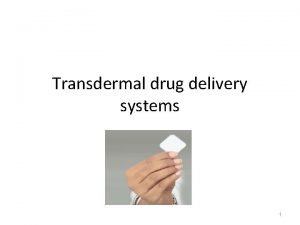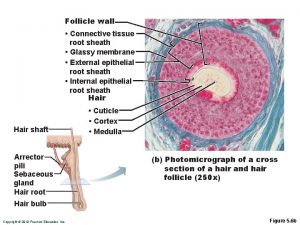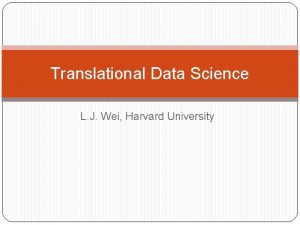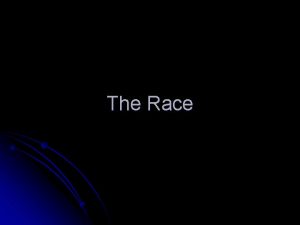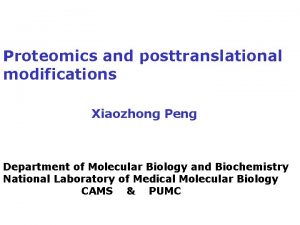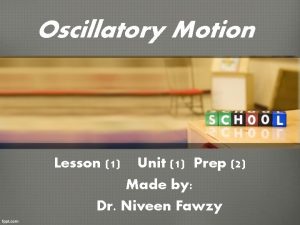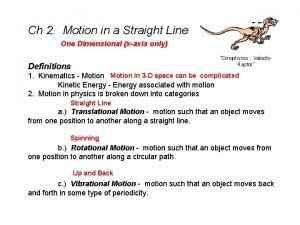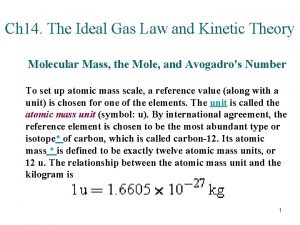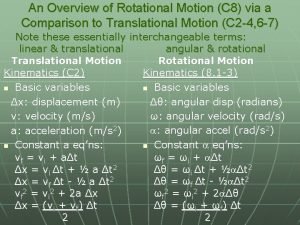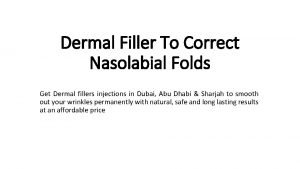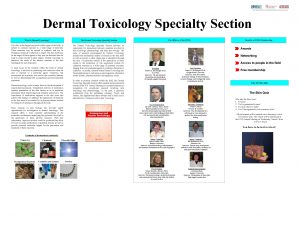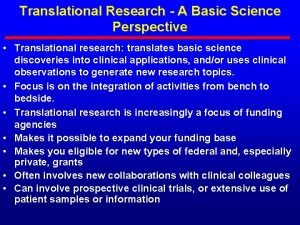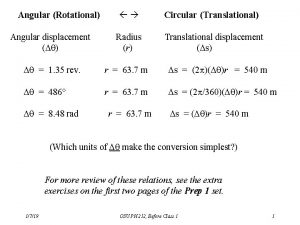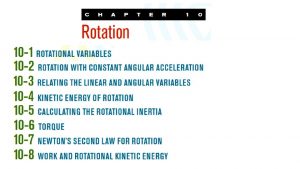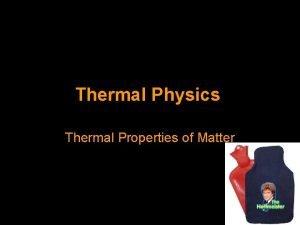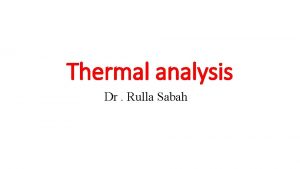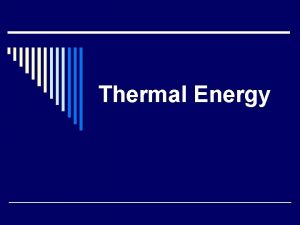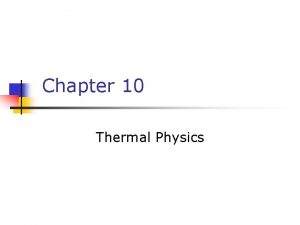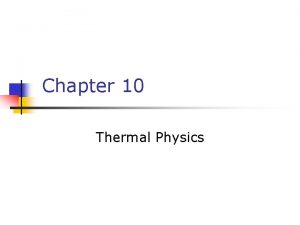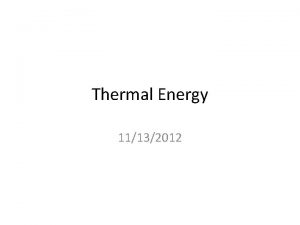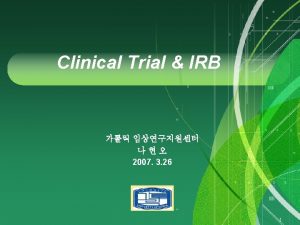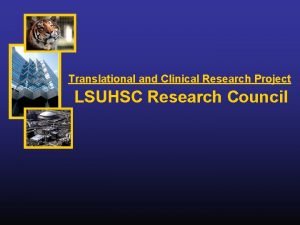A TRANSLATIONAL APPROACH TO PRECLINICAL RESEARCH Thermal Dermal

































- Slides: 33

A TRANSLATIONAL APPROACH TO PRECLINICAL RESEARCH Thermal Dermal Burn Modeling in Rats and Minipigs Comparative Biosciences, Inc. 786 Lucerne Drive Sunnyvale, CA 94085 Telephone: 408. 738. 9261 www. compbio. com

A TRANSLATIONAL APPROACH TO PRECLINICAL RESEARCH • Premier Preclinical Contract Research Organization • Specializing in Dermal and Ocular Pharmacology, Toxicology and Histopathology • 17 Years in business • Located in the heart of Silicon Valley • State of the art, purpose-built facility • ~30 employees with 7 Ph. Ds, 2 pathologists • Experienced study directors and scientists • GLP, OECD, FDA, USDA, OLAW • AAALAC Accreditation

A TRANSLATIONAL APPROACH TO PRECLINICAL RESEARCH Model induction in Mini. Pigs • CBI offers either full or partial thickness dermal burn modeling in minipigs that demonstrates dermal healing and is also humane and well tolerated by the rat and pig – Uniform full or partial thickness burns are surgically-induced under strict aseptic conditions with intense post surgical care, systemic antibiotics and pain control. – Device used is a stainless steel or brass block of defined weight (generally 300 gm) approximately 3 x 3 cm that is heated to a defined temperature (either 100 or 200 C for partial or full thickness respectively) and held onto the skin for a defined time (generally 1 min for partial and 30 sec for full thickness). Alternatively, for partial thickness burns, hot water method (scald) may be used. – – Test article and bandaging is administered appropriately Grafting, escharectomy and other procedures available Lesions are measured and photographed Biopsy or histopathology for histology, IHC or bioanalysis may be performed

A TRANSLATIONAL APPROACH TO PRECLINICAL RESEARCH Model induction in Rats • CBI offers either full or partial thickness dermal burn modeling in rats that demonstrates dermal healing and is also humane and well tolerated by the rat – Uniform full or partial thickness burns are surgically-induced under strict aseptic conditions with intense post surgical care, systemic antibiotics and pain control. – Device used is a small aluminum rod that is heated to a defined temperature (either 100 or 200 C for partial or full thickness respectively) and held onto the skin for a defined time (generally 30 sec min for partial and 45 -60 sec for full thickness). Alternatively, hot water method may be used. – Test article and bandaging is administered appropriately – Lesions are measured and photographed – Biopsy or histopathology for histology, IHC or bioanalysis may be performed

A TRANSLATIONAL APPROACH TO PRECLINICAL RESEARCH Typical Parameters for both pigs and rats – – – – – Daily to weekly body weights Daily clinical observations Food consumption Clinical pathology Toxicokinetics or pharmacokinetics Measurements and photography Necropsy or site biopsy Histopathology with special staining Sponsor specific bioassays

A TRANSLATIONAL APPROACH TO PRECLINICAL RESEARCH Typical findings for both pigs and rats for standard parameters – For typical burn studies in which focal burns are placed on the dorsum: • Procedure is well tolerated with adequate pain relief • Daily to weekly body weights: There is mild body weight loss over the first week with return to weight gain after 1 week • Daily clinical observations: Animals may be slightly lethargic • Food consumption: No change or slight qualitative decrease • Clinical pathology: Within normal limits • For extensive burns (>50%) changes are seen in clinical pathology including glucose, total protein, albumin, LDH, insulin, BUN

A TRANSLATIONAL APPROACH TO PRECLINICAL RESEARCH Histopathology • Surgical biopsies during course of study as well as necropsy • Tissue stained with HE, trichrome, other stains upon request • IHC for various markers upon request • Digital image analysis for wound size, cellular infiltrates, inflammatory markers or other markers • Photomicroscopy

A TRANSLATIONAL APPROACH TO PRECLINICAL RESEARCH Full thickness dermal wound area Days 7 -10 Dermal burn area following placement of 2 dorsal full thickness burns and treated with various topical test articles. (N=8)

A TRANSLATIONAL APPROACH TO PRECLINICAL RESEARCH Full thickness dermal wound area Days 11 -14 Dermal burn area following placement of 2 dorsal full thickness burns and treated with various topical test articles. (N=8)

A TRANSLATIONAL APPROACH TO PRECLINICAL RESEARCH Sample data from a minipig burn study • Data from several studies • Burn study using 2 -4 pigs per group, treated with no treatment, vehicle and 5 topical compounds for 4 weeks • Six dorsal full thickness burns • Body weights, clinical observations • Wound area • Histopathology

A TRANSLATIONAL APPROACH TO PRECLINICAL RESEARCH Surgical procedures Under strict aseptic conditions, burns are created. Pig receives appropriate anesthesia, post operative pain control and antibiotics. Sterile wound dressing with test article is applied as per protocol.

A TRANSLATIONAL APPROACH TO PRECLINICAL RESEARCH Post-procedure bandaging Stockinet covering Bandage completed

A TRANSLATIONAL APPROACH TO PRECLINICAL RESEARCH Burn research • Partial and full thickness burns are typically created • Mini pigs-skin is most similar to human and are a robust laboratory animal for this model • Healing and re-epithelialization are of interest • Biomarkers and cytokines are currently of interest and not well understood • Histology is well characterized at CBI

A TRANSLATIONAL APPROACH TO PRECLINICAL RESEARCH Burn research • Burn progression is also of research interest • Following the initial burn, the lesion often worsens with time and is a significant adverse event • Progression is not well understood, but appears to be related to vascular injury, tissue oxygenation and mediate release.

A TRANSLATIONAL APPROACH TO PRECLINICAL RESEARCH Appearance of three types of burns: Full thickness burns extend to the underlying muscle layer

A TRANSLATIONAL APPROACH TO PRECLINICAL RESEARCH Deep partial thickness burns or second degree burns in patient and in pig model. Burn extends into the dermis, but not to the muscle layer.

A TRANSLATIONAL APPROACH TO PRECLINICAL RESEARCH Partial thickness burn Day 1: Day 1 -8 Focal area of blister and rim of hyperemia and edema. Day 11 -21 Progressive re-epithelialization and healing

A TRANSLATIONAL APPROACH TO PRECLINICAL RESEARCH Deep partial thickness burns or second degree burns in patient and in pig model. The epithelium is still intact, but the superficial underlying collagen is bluish and amorphous. Vascular and cellular events have not yet occurred. Deeper collagen is not as effected.

A TRANSLATIONAL APPROACH TO PRECLINICAL RESEARCH Partial thickness burns-Day 1: Acute thermal damage to the epidermis post surgically. Note hyperemic zone at burn-dermis interface. . Day 1: Acute thermal damage to the epidermis. Note hyperemic zone at burndermis interface.

A TRANSLATIONAL APPROACH TO PRECLINICAL RESEARCH Partial thickness burn-Day 8 and 21 Day 8 -Dense scab formation. There is little re-epithelialization but dense new granulation tissue with inflammation is present in the wound bed

A TRANSLATIONAL APPROACH TO PRECLINICAL RESEARCH Full thickness or 3 rd degree burns. Damage extends to the underlying muscle.

A TRANSLATIONAL APPROACH TO PRECLINICAL RESEARCH Full thickness burns-increased heat and time exposure Day 1: Acute thermal damage to the epidermis post surgically. Note hyperemic zone at dermis-burn interface Day 8: The surface is necrotic with a deep escharotic crust overlying the lesion

A TRANSLATIONAL APPROACH TO PRECLINICAL RESEARCH Histology, full thickness, with loss of epithelium-2 days Full thickness burn, 2 days. There is a blister with separation of the epithelium from the underlying dermis. There are large, fluid fill blisters containing large numbers of neutrophils. The underlying dermis is exposed with inflammation, edema, hemorrhage and congestion. 40 x HE

A TRANSLATIONAL APPROACH TO PRECLINICAL RESEARCH Histology, full thickness, with loss of epithelium-3 days Full thickness burn, 3 Days. There is complete loss of epithelium 40 x HE Full thickness burn, 3 days, with complete loss of epithelium. The underlying dermis is exposed with inflammation, edema, hemorrhage and congestion. 40 x HE

A TRANSLATIONAL APPROACH TO PRECLINICAL RESEARCH Full thickness burns-increased heat and time exposure. Day 3 biopsy with histology Day 3: Acute thermal damage to the epidermis post surgically. Note hyperemic zone at dermisburn interface. The center of the burn has been biopsied under brief general anesthesia Histology Day 3: Full thickness acute thermal damage to the epidermis post -surgically. Note that thermal damage extends through the dermis into the deep adipose tissue. HE 10 x

A TRANSLATIONAL APPROACH TO PRECLINICAL RESEARCH Lesion development-Full thickness; Day 14 • Epithelium partially complete or nearly complete covering • Epithelium is thickened in comparison to normal epithelium (2 -3 x as thick) at edges, but may be very thin in the center • Epithelial hyperplasia is common at edges • Underlying collagen is consistent with granulation tissue • Thick eschar and crust present

A TRANSLATIONAL APPROACH TO PRECLINICAL RESEARCH Full thickness Day 14 There is crust formation with a thickened epithelium, There is edema and inflammation primarily of the superficial dermis and formation of more mature granulation tissue filling the wound bed.

A TRANSLATIONAL APPROACH TO PRECLINICAL RESEARCH Lesion development-Full thickness; Day 28+ • Epithelium complete or nearly complete covering • Epithelium is thickened in comparison to normal epithelium (2 -3 x as thick) • Epithelial hyperplasia is common • Underlying collagen is more mature with normal orientation • Thick eschar and crust present

A TRANSLATIONAL APPROACH TO PRECLINICAL RESEARCH Full thickness Day 28 Histologically, the epithelium is covering all or most of the wound bed and is hyperplastic. There is a dense fibrous wound bed with collagen, neovascularization and mild inflammation. Macroscopically, there is re-epithelializaton and healing of the wound with some small scabbing. Day 28 The epithelium is covering all or most of the wound bed and is hyperplastic. There is a dense fibrous wound bed with collagen, neovascularization and mild inflammation

A TRANSLATIONAL APPROACH TO PRECLINICAL RESEARCH Histologic scoring Semi-quantitative • Industry standard 0 -4 severity for • Inflammation • Re-epithelialization • Collagen formation • Epithelial hyperplasia • Quantitative • Measure entire wound length and measure amount of new epithelial covering and determine percentage

A TRANSLATIONAL APPROACH TO PRECLINICAL RESEARCH Histologic scoring Histological Scores 4. 5 4 Mean Histo Score 3. 5 3 2. 5 2 1. 5 1 0. 5 0 No treatment Vehicle Silver Positive sulfadiazine. FP-025 (5 TAmg/m. L) 1 Control Epi closure Inflammation FP-025 TA 2(50 mg/m. L) No burn Fibrosis Mean Histological Scores following partial thickness burns in 4 minipigs treated with vehicle, silver sulfadiazine and two test articles. The test articles, vehicle and positive control all positively effected the burn resolution.

A TRANSLATIONAL APPROACH TO PRECLINICAL RESEARCH Histologic scoring CD 31 and KI 67 IHC demonstrating marked increases in the burn site at 20 days consistent with tissue healing

A TRANSLATIONAL APPROACH TO PRECLINICAL RESEARCH Summary • At CBI, we have developed and validated a consistent and reproducible model of partial and full thickness burns in minipigs • The lesion is uniform and consistent between sites on the same animal and between animals both macroscopically and microscopically.
 Primary control vs secondary control
Primary control vs secondary control Preclinical research services
Preclinical research services Preclinical research services
Preclinical research services Thermal energy section 3
Thermal energy section 3 Thermal transfer vs direct thermal printing
Thermal transfer vs direct thermal printing Uneven junction of the dermis with the epidermis
Uneven junction of the dermis with the epidermis Function of stems
Function of stems Meristematic tissue
Meristematic tissue Dermal tissue examples
Dermal tissue examples Dermal papillae
Dermal papillae Disadvantages of paraffin test
Disadvantages of paraffin test Lateral growth in plants
Lateral growth in plants Capillary puncture equipment and procedures
Capillary puncture equipment and procedures Morfologa
Morfologa Sea urchin diagram
Sea urchin diagram Dermal ossicles
Dermal ossicles Class crinoidea characteristics
Class crinoidea characteristics Dermal advancement flap
Dermal advancement flap Dermal zones of jaundice
Dermal zones of jaundice The reticular layer
The reticular layer Factors affecting dermal penetration of drugs
Factors affecting dermal penetration of drugs Epidermal tissue system
Epidermal tissue system Root sheath
Root sheath What is translational equilibrium
What is translational equilibrium Translational data science
Translational data science Translational kinetic energy
Translational kinetic energy Translational vs rotational motion
Translational vs rotational motion Post translational and co translation
Post translational and co translation Oscillatory motion 2nd prep
Oscillatory motion 2nd prep Translational kinetic energy
Translational kinetic energy Translational kinetic energy formula
Translational kinetic energy formula Translational motion definition
Translational motion definition Translational kinetic energy
Translational kinetic energy Translational vs rotational motion
Translational vs rotational motion

